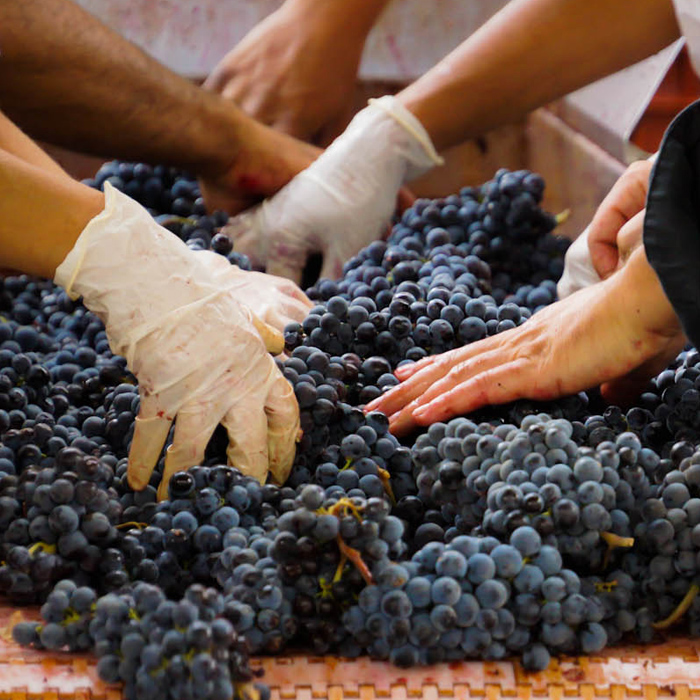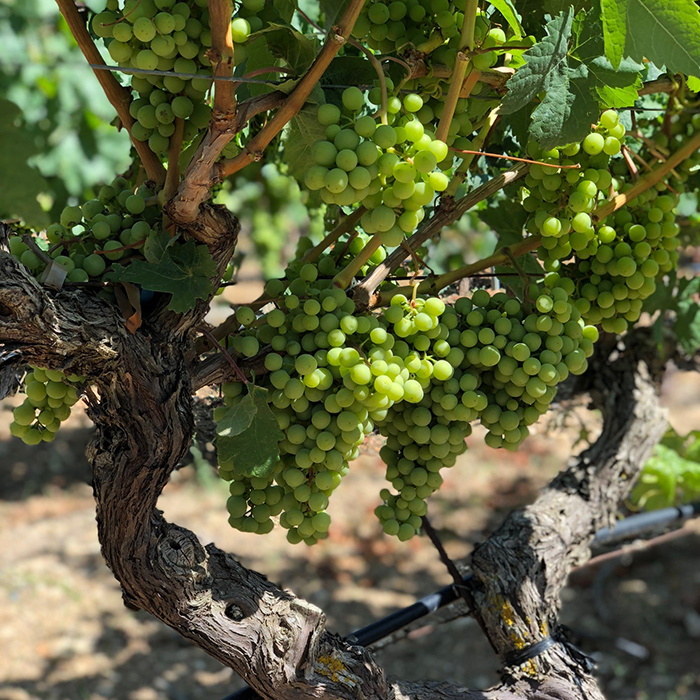Your guide to Greek grapes
Author: Sophie Thorpe

Agiorgitiko
Translating literally as “St George’s grape”, this is the most widely planted red grape in Greece. Native to Neméa in the Peloponnese, Agiorgitiko (pronounced a-yor-yi-ti-ko) can produce anything from fruity rosés through to dark, tannic, age-worthy reds. The best wines tend to come from higher-altitude sites, where the grape’s acidity is preserved and alcohol levels don’t get out of hand. At its best, Agiorgitiko produces wines with a relatively full body and spicy red fruit, which lend themselves to time in seasoned oak.
Assyrtiko
This white is fast becoming Greece’s flagship grape. Originating in the volcanic soils of Santorini, Assyrtiko (pronounced ah-seer-tee-koe) is particularly notable for its ability to retain its acidity even in the Mediterranean heat (so much so that producers in the New World – including South Africa and Australia – are experimenting with the grape). Some examples are oaked (such as the late-harvest niktari style) and – thanks to its acidity – the best can age beautifully. The wines are intensely mineral and fresh with thrilling acidity. Thanks to its steely character, it works well in blends with Sauvignon Blanc, Sémillon and Malagousia. It can also be used to produce sweet wines, such as Vinsanto.
Try: 2018 Domaine Lyrarakis, Voilá Assyrtiko, Crete, Greece
Dafni
This white variety was destined for extinction until our friends at Lyrarakis salvaged it – with around 15 hectares in production today. The name comes from “daphne” – Greek for “bay leaf”, referring to the wines’ distinctive scent. The wines tend to be light and bright, with good acidity and intense herbal aromas, with bay leaf, pine and rosemary appearing, alongside citrus and stone-fruit notes.
Try: 2017 Domaine Lyrarakis, Dafni, Psarades Vineyard, Crete
Kotsifali
Indigenous to Crete, this red variety produces generous, soft, spicy wines with relatively high alcohol. Kotsifali (pronounced koh-tsee-fah-lee) has historically almost always been blended, most commonly with Mandiliara – a grape that adds colour and structure. Today, however, producers are experimenting with varietal wines, using lower yields to make the most of Kotsifali’s gentle tannins and fruit-forward style.
Try: 2017 Domaine Lyrarakis, Kotsifali, Crete, Greece

Plytó
Plytó (pronounced plee-toh) is another grape rescued from the brink of extinction by Lyrarakis. The best examples come from low-yielding and high-altitude vineyards, where it produces lively whites with vibrant acidity, and green fruit, citrus and mineral notes.
Try: 2018 Domaine Lyrarakis, Psarades Plytó, Crete, Greece
Thrapsathiri
Another Cretan local, this white grape is thought to be closely related to Vidiano (see below), another Cretan variety. Often blended in the past (or forming part of field blends), today it is increasingly made as a varietal wine. Thrapsathiri handles oak well, producing distinctive, full-bodied wines with intense citrus and stone-fruit aromas. These opulent and almost exotic wines are a brilliant partner for richer dishes.
Try: 2017 Domaine Lyrarakis, Armi Thrapsathiri, Crete, Greece
Vidiano
This rare white grape has been salvaged from obscurity by a handful of growers, including Lyrarakis. The wines are relatively full-bodied and fruity – with everything from citrus through to more tropical notes, and have plenty of refreshing acidity. Barrel-fermented versions tend to offer more honeyed aromas, versus crisper unoaked styles such as our own-label version.
Try: 2018 Berry Bros. & Rudd Vidiano by Lyrarakis Wines, Crete, Greece
Xinomavro
Xinomavro (pronounced ksee-no-mav-roe) is capable of producing a wide range of styles, but always has high acidity. It poses a challenge in the vineyard, which is why quality can vary. The best wines, however, age very well – indeed the grape’s sometimes fierce tannins (partly thanks to its surprising number of seeds – at least double that of most other grapes) can demand time to round out. Sometimes compared to Pinot Noir or Nebbiolo, this red grape is capable of producing wines with delicate perfume – with red fruit turning into savoury aromas over time.
Our own-label Vidiano has just arrived in stock: find out more on bbr.com.



The article on Assyrtiko is confusing. The grape is abundant in Santorini, best example being Alpha Estate single parcel.
Why comment on the lesser flavoured and less mineral content Cretian alternative?
Dear Ian,
Assyrtiko is indeed abundant in Santorini, its native home, and there are many brilliant wines from there. We’ve recommended the Lyrarakis example as a classic and great-value wine that’s a perfect introduction to the grape.
Best,
Sophie
I think there are many exciting wines coming out of Greece and the Greek islands. lots of experimentation is taking place with blends of different grapes like Malagousia and Sauvignon blanc. I came across a Cabernet from the pelloponese which was stunning. As you say watch this space.